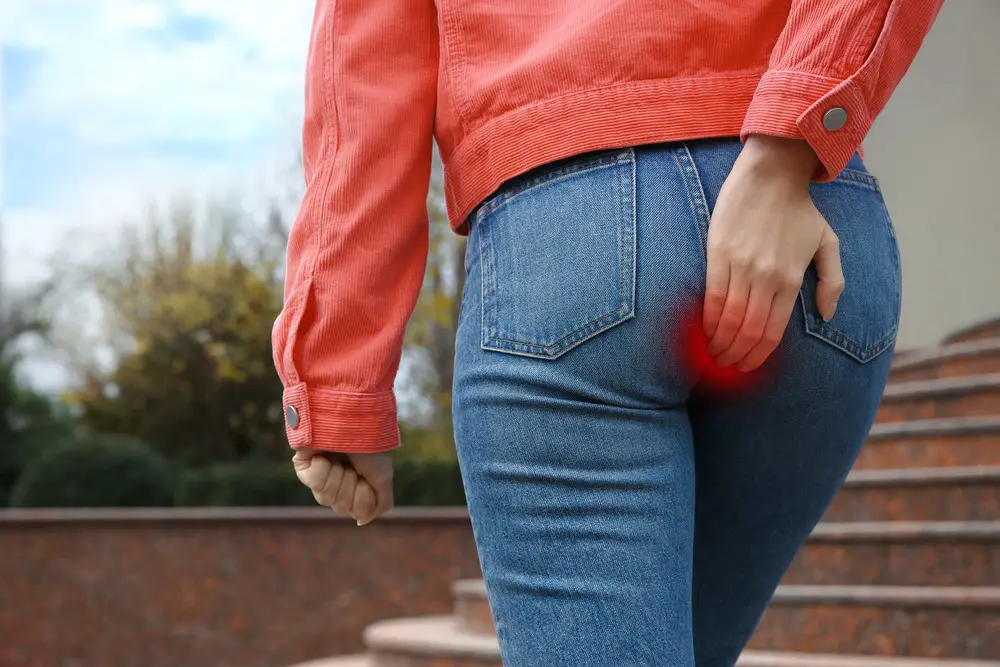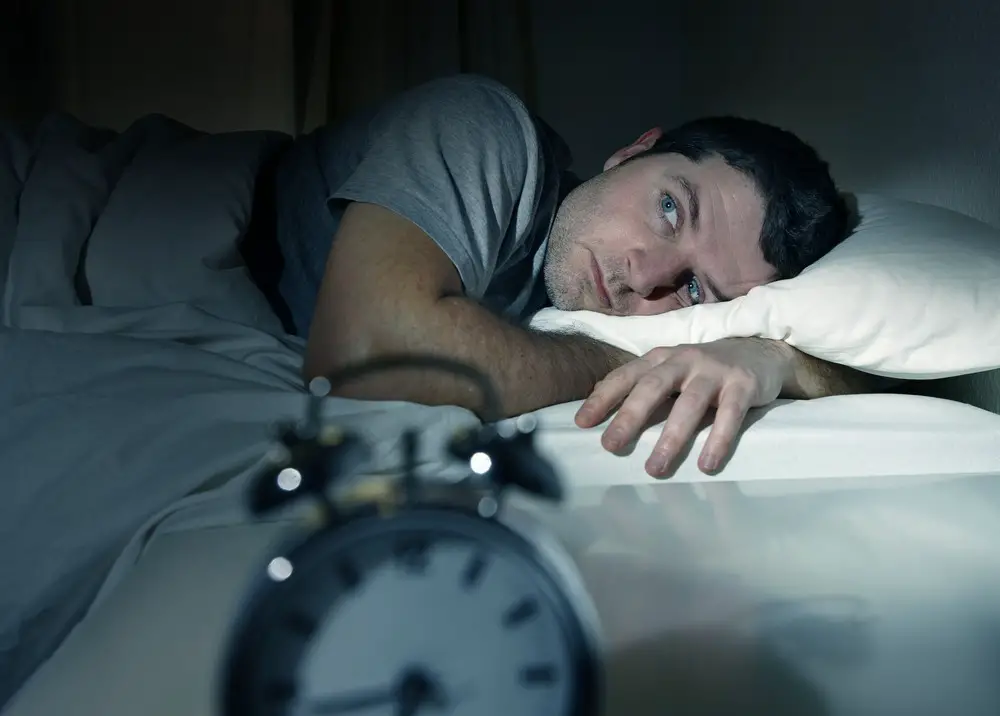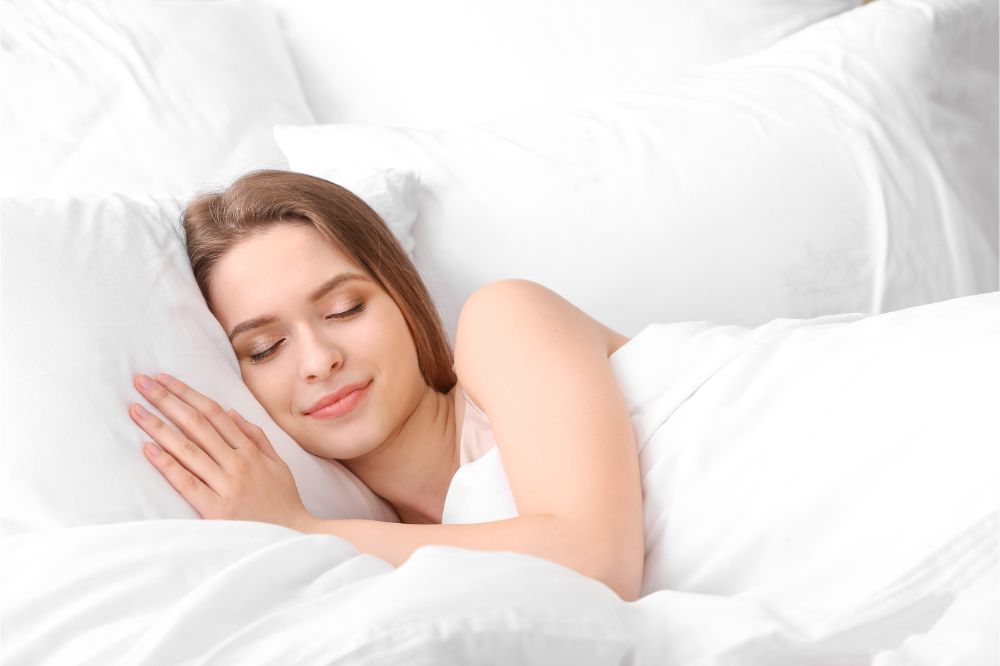As a BetterHelp affiliate, we receive compensation from BetterHelp if you purchase products or services through the links provided
Hemorrhoids can be painful and uncomfortable, making it difficult for sufferers to get a good night’s sleep. You are not alone if you struggle to rest due to hemorrhoidal pain. In this article, we will explore tips and techniques to help you sleep better and find relief from your symptoms.
Understanding what hemorrhoids are and what causes them to manage the condition effectively is crucial. Hemorrhoids occur when the veins in the rectal area become swollen and inflamed, leading to itching, pain, and sometimes even bleeding. Addressing the root causes of your hemorrhoids and adjusting your lifestyle can go a long way in helping you sleep more soundly.
Finding the correct sleeping position, using over-the-counter treatments, and practicing good hygiene can make it easier to sleep with hemorrhoids. Managing your symptoms will help you get the rest you need and also aid in your overall recovery from this discomforting condition.
Key Takeaways
- Understanding hemorrhoids and their causes is crucial for effective management.
- Lifestyle adjustments can help alleviate symptoms and improve sleep.
- Proper sleeping positions, treatments, and hygiene practices can make it easier to sleep with hemorrhoids.
Understanding Hemorrhoids
Hemorrhoids, or piles, are veins in the rectum and anus that become swollen and inflamed. They can cause discomfort, itching, and sometimes pain. Understanding the different types, causes, and symptoms of hemorrhoids is crucial to address and manage this condition effectively.
Causes of Hemorrhoids
Several factors contribute to the development of hemorrhoids:
- Straining: Prolonged straining during bowel movements or from lifting heavy objects can put excessive pressure on the veins around the rectum and anus.
- Obesity: Increased body weight puts more pressure on the rectal veins, leading to hemorrhoids.
- Diarrhea: Frequent bowel movements can irritate the area, resulting in swelling and inflammation.
- Pregnancy: The additional weight from carrying a baby and the strain of childbirth can cause hemorrhoids in pregnant women.
- Low-fiber diet: A diet lacking in fiber can lead to hard stools, increasing the likelihood of straining and causing hemorrhoids to develop.

Internal Hemorrhoids
Internal hemorrhoids are located inside the rectum and are not visible or felt. Their symptoms may include:
- Painless bleeding during bowel movements
- A sense of fullness or rectal pressure
External Hemorrhoids
External hemorrhoids occur under the skin around the anus, where they can be visible and felt during examination. Symptoms of external hemorrhoids include:
- Swelling and inflammation around the anus
- Itching or irritation in the anal area
- Pain or discomfort, especially during bowel movements
Thrombosed Hemorrhoids
Thrombosed hemorrhoids result from a blood clot forming within the inflamed vein, further exacerbating pain and swelling. These are usually more severe forms of external hemorrhoids. Symptoms of thrombosed hemorrhoids include:
- Severe pain and swelling in the anal area
- A hard, bluish lump on or near the anus
Understanding the causes and types of hemorrhoids can help ensure proper treatment and prevent future occurrences. Maintaining a healthy lifestyle, including a fiber-rich diet and regular physical activity, is essential to minimize the risk of developing hemorrhoids.

Managing Hemorrhoid Symptoms
Relieving Pain and Irritation
To alleviate hemorrhoid pain, consider using a sitz bath. Soak the anal area in warm water for 10-15 minutes several times daily. Combining Epsom salt in the water can further soothe irritated skin. A warm compress or an ice pack can also be applied to the affected area to relieve pain and discomfort.
If you’re dealing with chronic constipation, try making dietary changes by consuming more fiber-rich foods such as vegetables, lentils, bread, and beans. Increasing water intake and regular exercise can also help ease bowel movements. An over-the-counter stool softener or laxative may be necessary in more severe cases.
Reducing Swelling
To reduce swelling caused by hemorrhoids, apply a topical anti-inflammatory cream or ointment that contains ingredients like witch hazel or aloe vera gel. When selecting a hemorrhoid cream, choose one designed to minimize swelling and inflammation. You can also consider using over-the-counter oral medications such as NSAIDs like ibuprofen or acetaminophen for pain relief and reducing inflammation.
Controlling Itching and Bleeding
It’s essential to keep the anal area clean and dry to manage itching associated with hemorrhoids. After a bowel movement, use gentle, fragrance-free wipes or moistened toilet paper to clean the area. Apply ointments or creams containing witch hazel or aloe vera to relieve itching and soothe irritated skin.
Avoid using alcohol-based wipes or products to minimize bleeding, as they can cause further irritation. Maintain a healthy diet rich in fiber and hydration to promote regular bowel movements and reduce straining during defecation. If bleeding persists or worsens, consult a proctologist for further evaluation and treatment.
Sleeping with Hemorrhoids
Best Sleeping Positions
When sleeping with hemorrhoids, finding the right position is crucial. Some of the best positions include:
- Lying on your side: This position reduces pressure on the anal area, which can help alleviate pain and discomfort. It’s especially beneficial for those with external hemorrhoids.
- Elevating your lower body: Placing a soft pillow under your hips can help ease pressure on the affected area. This position may also help reduce swelling and improve blood flow.
- Sleeping in the fetal position: Curling up with your knees toward your chest may minimize the pressure and discomfort caused by hemorrhoids.
Useful Bedding Tips
Choosing the right bedding can make a big difference in comfort while sleeping with hemorrhoids. Here are some useful tips:
- Use a soft pillow for your hips or under your knees to reduce pressure on the anal area.
- Opt for smooth, breathable sheets made of natural materials to prevent irritation and itchiness.
- Avoid sleeping on a hard surface, which may exacerbate pain and inflammation.
- Consider applying a lidocaine-based cream before bed for temporary relief from painful hemorrhoids.
Creating a Relaxing Sleep Environment
A calming sleep environment can help reduce the impact of hemorrhoids on sleep quality. Here are some suggestions:
- Maintain a regular bedtime routine to signal your body that it’s time to relax andEnsureake sure your bedroom is comperature, as extreme temperatures can aggravate hemorrhoid symptoms.
- Limit exposure to electronic devices, such as smartphones and TVs, before bedtime, to promote relaxation.
- Create a soothing environment using calming scents, soft lighting, and white noise machines.
In addition to adjusting your sleep position and environment, addressing the underlying causes of hemorrhoids is essential. Straining during bowel movements and chronic constipation can contribute to developing hemorrhoids. Incorporate a high-fiber diet, drink plenty of fluids, and avoid becoming constipated to help alleviate symptoms. A warm compress to the affected area may also relieve itchiness and discomfort.
Frequently Asked Questions
How to relieve pain at night?
To alleviate hemorrhoid pain at night, one can try some of the following remedies:
- Apply an over-the-counter hemorrhoid cream or ointment before bedtime.
- Use a cold pack or compress to reduce swelling and numb the area.
- Elevate the affected area by placing a soft pillow under the buttocks.
- If needed, take a nonprescription pain reliever, such as ibuprofen or acetaminophen.
What is the best sleeping position?
The best position for sleeping with hemorrhoids is often lying on one’s side. This can help relieve pressure on the rectal area:
- Use a supportive pillow between the knees to maintain proper alignment.
- Add a small pillow or folded towel under the stomach for extra support.
Should I walk or lay down?
Walking or light exercise can promote blood flow, which can help alleviate hemorrhoid pain. However, listening to one’s body and resting when necessary is essential.
- Stick to low-impact exercises like walking or swimming, if possible.
- Avoid exercises that exacerbate hemorrhoid pain, such as lifting weights or intense workouts.
Positions to avoid?
Certain positions can exacerbate hemorrhoid pain and should be avoided:
- Avoid sitting or standing for extended periods, as this can increase pressure on the rectal area.
- Be cautious when lifting heavy objects, as this can strain the muscles in the rectal area.
Does bed rest help?
While bed rest can help alleviate hemorrhoid pain in some cases, prolonged lying can also lead to increased pressure on the rectal area. Finding a balance between resting and staying active is essential to promote healing.
Sitting position tips?
When sitting with hemorrhoids, consider the following tips to minimize discomfort:
- Use a cushion or donut-shaped pillow to provide added support and decrease pressure.
- Sit on a chair with a soft, cushioned seat.
- Avoid sitting on hard surfaces for prolonged periods.
- Take standing breaks to alleviate pressure and promote blood flow.
- How to Stay Calm When Dealing with Head Lice - September 30, 2025
- Easy Ways to Relax at the End of the Day - September 30, 2025
- How Organized Equipment Maintenance Reduces Worker Stress - September 30, 2025
This site contains affiliate links to products. We will receive a commission for purchases made through these links.



